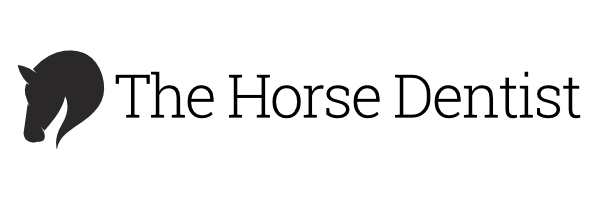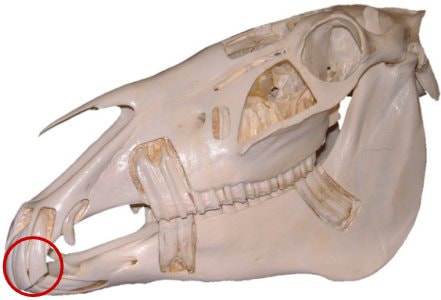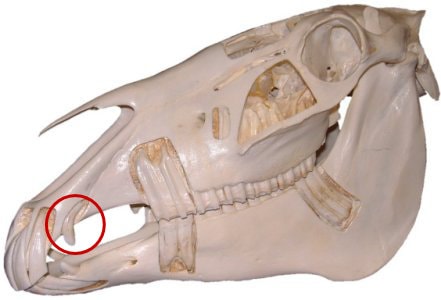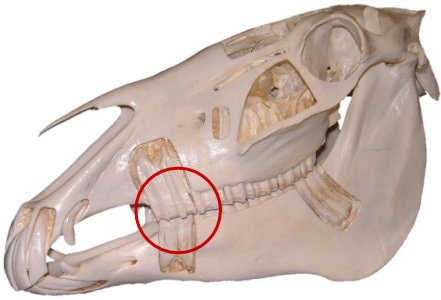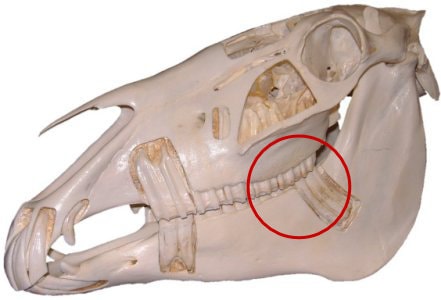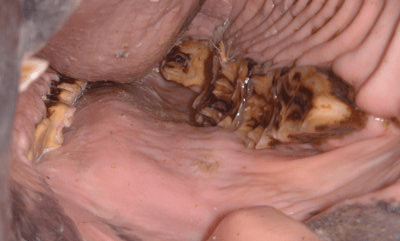Molars
The cheek teeth (the back six teeth) are divided into premolars and molars. The pre-molars and molars extend along the upper and lower jaws of the horse from the bars of the mouth (the area where the bit resides) to just behind the level of the eye. The first three cheek teeth are the pre-molars. The three teeth behind the pre-molars are the molars. The molars differ from the pre-molars in that they do not have any deciduous teeth preceding them and mtherefore they may be referred to as accessional teeth. The lower molars are narrower than the uppers, and sit about a half-tooth-width inside the edges of the uppers.
When the horse chews, the food is ground between these tables as the lower jaw moves down, out to the side, up and in again. Normal chewing consists of a circular motion several times in one direction, then a shift to chewing several times in the other direction forming a symmetrical figure eight pattern overall. The food is moved backwards along the molar table as the chewing process takes place.
The more a horse can chew its food, the easier it is for the digestive system to get goodness from the food. Often people will say that there horses teeth are fine because he is continually eating, however, it could be that the horse is needing to eat more food than is necessary because it is not chewing the food properly. This means that the digestive system cannot get the optimum benefit from the food and the horse needs to eat more to maintain its condition. The molars can only perform at their best if the surfaces of the upper and lower cheek teeth meet properly. This meeting of the teeth (occlusion) can be affected by many factors, however, the most common factors would include:
- the incisors (the front teeth) being too long so that the cheek teeth are held apart
- a molar or pre-molar being longer than the other teeth in the arcade and therefore preventing a good contact
Cheek Teeth Upper and Lower
